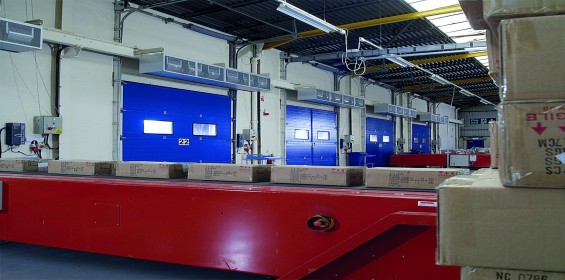Stop energy loss at the door
Published: 05 April, 2019
Manufacturing, warehousing and distribution businesses across the world are looking for ways to cut costs to remain as competitive as possible. And with productivity more crucial than ever, large warehouse doors are being left open for longer and used more frequently.
As internal temperatures drop by as much as 10°C within moments of the doors opening, it’s time for warehouse businesses to stop energy sneaking out of the back door and making a huge hole in their profits. PWE reports.
For the all-encompassing solution, without the inconvenience or discomfort caused by constantly opening and closing doors air curtains could provide a solution. Reznor for example says that its energy efficient air curtains cut energy loss by over 80% and deliver a uniform flow of air to separate the interior and exterior atmospheres, maintain the internal climate, offer significant cost savings and deliver vastly improved worker comfort.
Providing a comfortable and safe working environment is a must for every business owner. However the opening and closing of external doorways is unpreventable in warehouses and every time this happens warm air escapes and cold air enters. This makes a huge difference to fuel costs.
As well as the inevitable increase in energy bills, opening and closing external doors will also affect the internal temperatures and reduce the comfort levels for employees – especially those working close to the doorway. And with many warehouses storing perishable items, temperature sensitive stocks can also be compromised.
Comparative temperature readings show a drop of between 4°C and 10°C every time a warehouse door is opened. However, with a correctly sized air curtain the difference is normally just 1°C. With an over door air curtain, energy lost through open doors which was previously seen as unavoidable, can actually be reduced by as much as 80%.
Air curtains are effective in separating internal and external environments that doorways can remain open all day with very little effect on the heating system’s energy consumption with relatively little detriment to internal comfort conditions.
Putting a stop to energy loss
Energy efficient air curtains can be positioned directly over or down the side of a doorway. When doors are opened in heated buildings, colder external air flows in through the bottom part of the opening, while internal air flows out through the upper part. In air conditioned buildings, the opposite applies. Over door air curtains deliver a uniform flow of air across the full door width that separates the interior and exterior atmospheres.
As well as their energy saving capacity, air curtains also have ‘hidden’ benefits. Over door air curtains induce warm air down from high level that would otherwise be lost through the roof, thus helping to de-stratify the building and eliminate cold spots. Among new developments is a fresh design that promotes a laminar airflow and includes deep profile aerofoil section air straightening veins. These improve the efficiency of climate separation between the indoor and outdoor environment, compared to previous models.
In addition, air curtains are not subject to the same wear and tear as roller-shutter doors so mechanical failures and damage can also become a thing of the past. So for energy savings or not having to replace worn-out doors, air curtains can help contain overhead costs while preserving comfort for employees and maintaining ideal conditions for stock.
Businesses looking to cut their energy bills don’t have to turn down the heating or turn off the air conditioning system. With a simple and effective installation of air curtains on the warehouse doors, businesses can keep employees happy, save money on bills and finally shut the door on unnecessary energy loss.
For further information please visit: www.nortekhvac.com







